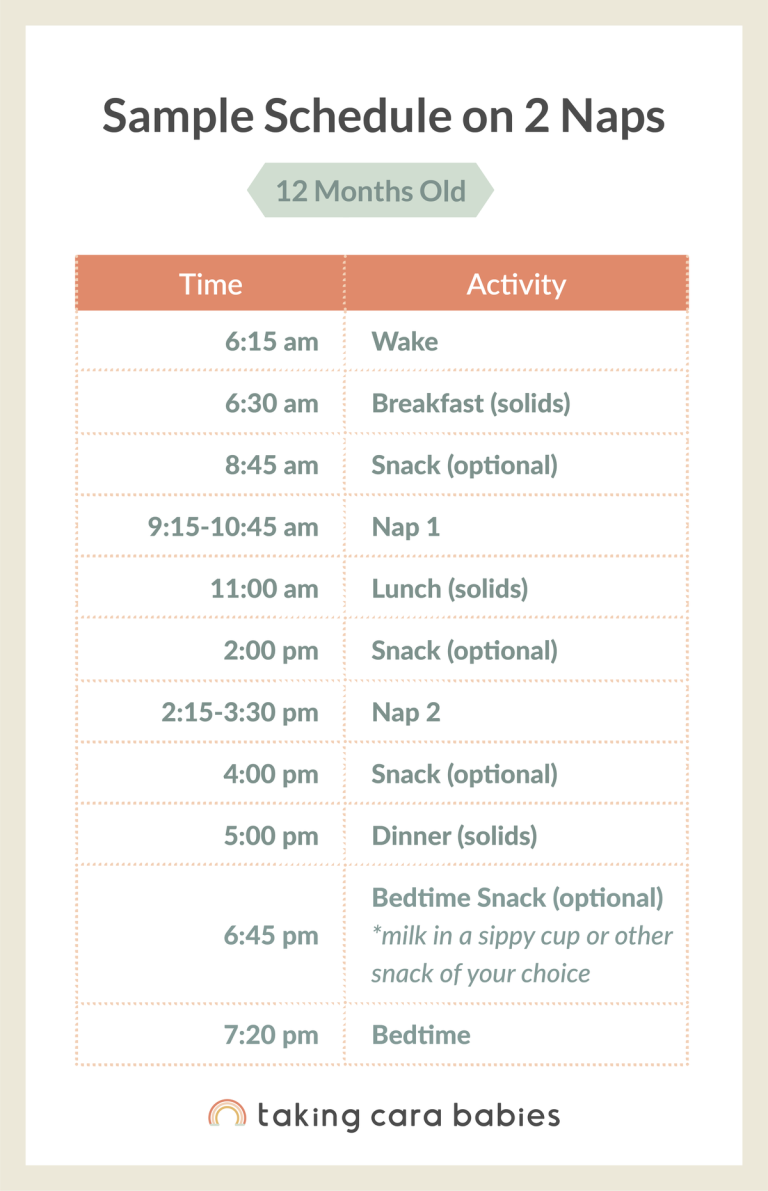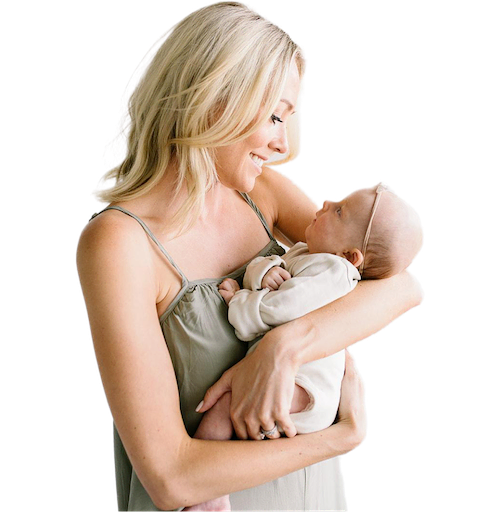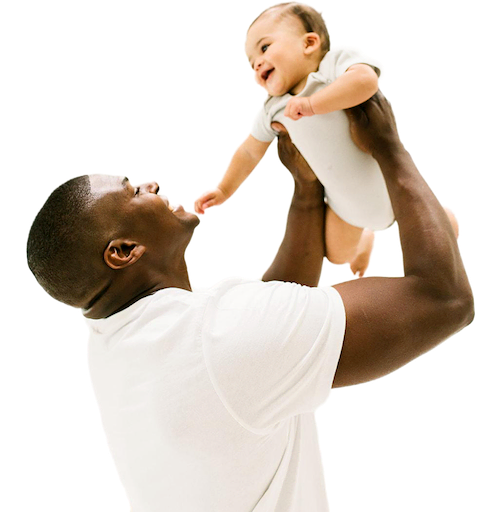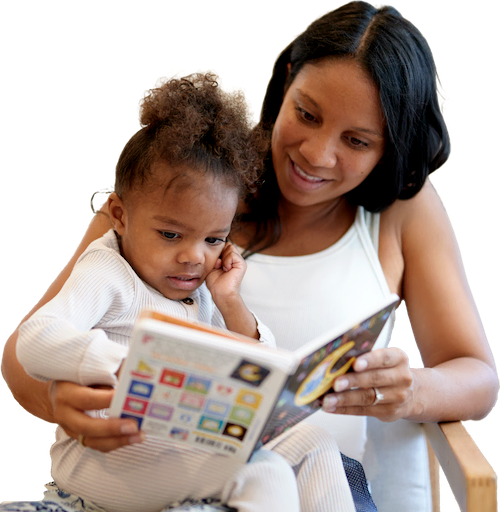Congratulations, you have a one year old! Celebrating a first birthday is such an exciting milestone. At 12 months old, your little one’s personality is shining, and they are keeping you on your toes. Let’s talk about some of the most common questions I get about 12 month old sleep schedules, regressions, naps, and more.
What are the wake windows for a 12 month old baby?anchor
Around 12 months old, wake windows are between 3-4 hours. Morning wake windows are generally on the shorter end of the range, and the last wake window of the day is towards the longer end of the range.
Here’s a general daily routine for your one year old:
About 3 hours after Wake Time = Nap 1
About 3-3.5 hours after the end of Nap 1 = Nap 2
About 3.5-4 hours after the end of Nap 2 = Bedtime
How many naps should a 12 month old be taking? Is 12 months old too early for one nap?anchor
For a one year old, we are aiming for 2.5-3 hours of daytime sleep, divided between two naps. On a two nap schedule, the goal is to have each nap last at least one hour, but no longer than two hours. This allows for restorative sleep during the day, keeps bedtime between the sweet spot of 7:00-8:00 pm, and provides enough active awake time to be tired for naps and night sleep.
I often see babies this age suddenly fight naps or struggle to fall asleep, causing parents to wonder if it’s time to transition to one nap. In most of these cases, dropping a nap is not the solution. Instead, sudden changes in sleep are typically caused by illness, teething, new skills, or the 12 month sleep regression.
When your baby is truly ready to make the 2 to 1 nap transition, you’ll see that they’re able to handle much longer wake windows. This is necessary in order to get that one restorative nap and have consolidated night sleep. Most 12 month olds are not yet able to handle these longer wake windows without being overtired at naptime and bedtime. Before deciding to make any changes to your baby’s routine, we want to make sure your baby is consistently showing signs that it’s time to drop a nap for at least one week, ideally two. Transitioning to one nap too early can lead to other sleep issues, like short naps, early morning wakings, or night wakings. Making this nap transition when your baby is truly ready for it will make the process much smoother.
A Note for Daycare Parents: Please hear me, I know you may not have control over when your baby transitions to one nap at daycare, or daycare naps in general. Be assured that your baby’s daycare provider can handle it! Even if your little one is on a one-nap schedule at daycare, it may help to maintain two naps on non-daycare days to prevent overtiredness. For more help with daycare naps, the blog Daycare and Baby Sleep has you covered.
If nights are going well but naps are a struggle or you’re looking for more guidance for nap transitions, my Conquering Naps class can help.
What is a sample sleep schedule for a 12 month old? anchor
I’d like to share some sample schedules with you. It’s important to remember these schedules are only samples of what a day could look like and may vary depending on when you start your day, how long your baby naps, and their individual wake window and feeding needs.

Text version of table
| Time | Activity |
|---|---|
| 6:15 am | Wake |
| 6:25 am | Feeding (breast/bottle) |
| 7:30 am | Breakfast (solids) |
| 9:05 am | Feeding (breast/bottle) |
| 9:15-10:45 am | Nap 1 |
| 12:15 pm | Feeding (breast/bottle) |
| 1:00 pm | Lunch (solids) |
| 2:15-3:30 pm | Nap 2 |
| 3:30 pm | Feeding (breast/bottle) |
| 5:00 pm | Dinner (solids) |
| 6:45pm | Feeding (breast/bottle) |
| 7:20 pm | Bedtime |
Here is an example of a 2 nap schedule for a 12 month old who has been weaned from breast or bottle feedings. Notice we are still offering food and drink about every 2.5-3.5 hours. Again, this is just one possible way a day could play out based on appropriate wake windows, nap lengths, and your baby’s caloric needs.

Text version of table
| Time | Activity |
|---|---|
| 6:15 am | Wake |
| 6:30 am | Breakfast (solids) |
| 8:45 am | Snack (optional) |
| 9:15-10:45 am | Nap 1 |
| 11:00 am | Lunch (solids) |
| 2:00 pm | Snack (optional) |
| 2:15-3:30 pm | Nap 2 |
| 4:00 pm | Snack (optional) |
| 5:00 pm | Dinner (solids) |
| 6:45pm | Bedtime Snack (optional) *milk in a sippy cup or other snack of your choice |
| 7:20 pm | Bedtime |
What time should my 12 month old wake up from their afternoon nap? anchor
In order to maintain that sweet spot bedtime between 7:00-8:00 pm, your 12 month old should wake between 3:00-4:00 pm. This will allow them to have a 3.5-4 hour wake window from the end of the nap until bedtime. Having a full wake window before bed makes it easier for your baby to fall asleep and sleep through the night.
How much should a 1 year old eat?anchor
After 12 months of age, solids become a little one's primary source of nutrition. Please know it’s normal to see growth and weight gain slow after a child’s first birthday. If you feel like this transition is causing sleep disruptions, my blog on solids and baby sleep can help!
Please speak with your pediatrician about any concerns you have regarding how much your one year old is eating.
How much milk should a 12 month old drink?anchor
According to the American Academy of Pediatrics, babies at this age should drink 16-24 ounces of whole milk per day. Keep in mind, the AAP does not recommend introducing whole milk until a baby is at least 12 months old.
For some babies and families, cow's milk is not the best option. If you have questions about milk alternatives and ensuring your baby gets the nutrition they need for healthy growth and development, please speak with your pediatrician.
How do we make the transition from breastmilk or formula to whole milk? How do we transition to whole milk for a 1 year old?anchor
How exactly this transition works is a matter of preference (usually your baby’s preference). Some families find that a cold turkey approach works well, where they simply switch milk for formula or breastmilk. If a baby is willing to drink whole milk, this can work perfectly. Other babies prefer a more gradual approach. Here’s how that can work: Start by mixing one ounce of whole milk in with breastmilk or prepared formula. Every few days, gradually increase the amount of whole milk and decrease the amount of formula or breastmilk in each offering. You can go as fast or slow as your little one needs.
For nursing families, please know that if nursing continues to work for your family, there is no pressure to stop nursing and transition to whole milk just because your baby turned one.
If your one year old will not drink whole milk, you have any questions or concerns about their intake, or you aren’t sure if milk or a milk alternative would be best for your baby, be sure to check with your pediatrician.
When should my baby transition from a bottle to a sippy cup? How do I wean the bottle or transition from a bottle to a cup?anchor
According to the AAP, children should be fully transitioned from a bottle to a cup between 12 and 24 months. Now is a great time to introduce a cup if you haven’t already.
How you transition from a bottle to a cup depends on your baby and your comfort. Here are 2 options:
Cold Turkey: Simply throw out your bottles and use a cup for all milk and water. For some, this is a perfect approach because it’s a clear transitional point. To your baby, bottles are just not an option any longer. “Bottles are all gone. You’re so big! You can use a cup.”
Gradual Transition: Try switching from a bottle to a cup for one feeding. Instead of offering the bottle cuddled up on the couch, offer a cup of milk at the table with a snack or meal. Every few days, do this with one more bottle feeding. Don’t worry: this doesn’t mean cuddles are a thing of the past, but rather that cuddles aren’t connected with bottle feedings anymore. If you’re trying this gradual approach, it’s often best to start with midday feedings.
Expert Tip: When choosing a cup, you may need to experiment with different cup options to find what works best for your baby. Some babies love straw cups while others prefer open cups. Some may love the comfort of their already familiar “water cup” for milk, while others may do best with a brand new style of cup (like a straw cup instead of an open cup) for their milk. Keep in mind, it’s best to avoid cups with hard spouts.
If your baby is used to nursing or being fed to sleep and you’re wondering how they’ll be able to fall asleep after weaning, the 5-24 Month Collection is a fully customizable step-by-step guide that will keep you emotionally connected to your baby while helping them learn to fall asleep and go back to sleep without being fed to sleep.
How do I stop bottle feeding or breastfeeding my 12 month old at bedtime? How do I wean the bedtime bottle?anchor
When you're ready to drop your baby's bedtime bottle or nursing session, you'll want to start by shifting the timing of the bedtime feeding. Perhaps you offer it right before snuggling and turning out the lights. It might look like this:

Text version of Dropping the Bedtime Bottle: Starting Point table
| Bath |
|---|
| Pajamas and Sleep Sack |
| Books |
| Bedtime Bottle/Feeding |
| Snuggle and Turn Out Lights |
| Say Goodnight |
Step 1: For the next few days, shift that bedtime nursing session or bottle feeding a bit earlier in the routine. Think: offer the feeding just before reading books, like this:

Text version of Dropping the Bedtime Bottle: Step #1 table
| Bath |
|---|
| Pajamas and Sleep Sack |
| Bedtime Feeding |
| Books |
| Snuggle and Turn Out Lights |
| Say Goodnight |
Step 2: A few nights after that, shift the feeding out into the living room before your baby takes a bath. Here's what that would look like:

Text version of Dropping the Bedtime Bottle: Step #2 table
| Feeding (in the living room) |
|---|
| Bath |
| Pajamas and Sleep Sack |
| Books |
| Snuggle and Turn Out Lights |
| Say Goodnight |
Step 3: Once that feeding is before the bedtime routine truly begins (out in the living room) for a few days, you can transition from a bottle or nursing session to a sippy cup when you're ready. Please remember, if nursing is still working for your family, there's no reason to transition this feeding to a cup.
What are some 12 month old milestones? anchor
Here are a few milestones that you may notice around 12 months :
Standing unsupported
Taking a few steps without assistance
Going from standing to sitting independently
Flipping through pages of a book
Responding to their name
Following simple commands
Showing an attachment to a certain object or toy
Each new milestone your baby achieves is so exciting, but please know these milestones are based on age ranges and every baby develops at their own pace. Make sure to speak with your pediatrician if you have any questions or concerns about your baby’s development.
What are some activities I can do with my 12 month old? anchor
Here are some ideas to entertain and engage with your one year old:
Try stacking activities with objects around the house or something like this block set. Stacking helps build cognitive and fine motor skills.
Explore sensory play together. Make taste-safe play dough together, dump a cup of Cheerios into a small bin and add some spoons and scoops, or simply fill up the bath and let your little one play.
Play with a busy board. Little ones at this age love zippers, strings, buttons, and snaps. Don’t have a busy board? Try letting your little one flip the light switch on and off.
Encourage some role-play with toys or household items that allow your baby to mimic everyday life (They love this!). Things like a toy stethoscope, a hairbrush to brush their doll’s hair, measuring cups to “make recipes,” a small broom to "help with cleaning."
Make music! Music is always a good idea (and a great way to stretch a wake window). Create a homemade band with pots and pans or something like this xylophone.
What time should my 12 month old go to bed?anchor
I recommend a bedtime between 7:00-8:00 pm. This sweet spot bedtime can help your 12 month old fall asleep and stay asleep during the night. If your one year old’s bedtime is currently outside of this range and sleep is going well, don’t worry about making any changes.
On the other hand, if bedtime is after 8:00 pm and your little one is taking longer than 20 minutes to fall asleep, having false start bedtimes, not sleeping through the night, or waking earlier than 6:00 am, consider shifting bedtime just a bit earlier for a couple of weeks to see if it helps.
You may also have some days when things don’t go as you planned. Consider shifting bedtime earlier than 7:00 pm if:
Daytime sleep was less than 2-2.5 hours total.
A nap was short or refused.
Your 12 month old has been awake at least 3 hours and is really struggling to make it to bedtime, especially if they are sick.
If bedtime is a struggle and you’re not sure where to start, see the blog Creating a Bedtime Routine for some helpful tips.
How much sleep does a 12 month old need? anchor
A 12 month old needs about 13-15 hours of sleep in a 24-hour period. Our goal for this total looks like 2.5-3 hours of daytime sleep and 10-12 hours of overnight sleep. I find that babies who are on the higher end of the range for night sleep are often on the lower end of the range for daytime sleep and vice versa.
Is there a 12 month sleep regression? anchor
Yes, I often see sudden changes in sleep around a baby’s first birthday. Your one year old is experiencing major strides in physical, cognitive, and emotional development, and these can often impact sleep. My best advice for dealing with the 12 month sleep regression is to be consistent. Often, making changes to your baby’s healthy sleep habits during a sleep regression can turn a little bump in the road into an ongoing sleep struggle. If you’ve been struggling for more than a short time, please know that I can help you with a holistic and fully customizable approach to sleep so you can establish great sleep, even in the midst of a regression.
Does my 12 month old need a sleep sack? anchor
A sleep sack is a great option for your 12 month old! While the American Academy of Pediatrics says it is safe to introduce a blanket after your baby turns one year old, I’ve found that blankets aren’t usually the best option for a 12 month old. As you’ve probably noticed, babies this age move a lot in their sleep! With all of this movement overnight, that blanket is probably not going to stay on your baby, which means that it won’t keep them warm. One of the benefits of a sleep sack is that it moves with your baby throughout the night to keep them warm and comfortable. If you’re wondering what your baby should wear under a sleep sack, check out my blog Dress Your Baby for Comfortable Sleep.
Another benefit of a sleep sack is that zipping it up cues your baby’s brain to switch to sleepy-time mode and helps prepare your 12 month old for a nap or bedtime! Sleep sacks may also help prevent crawling out of the crib. We want your little one to practice new skills (like standing, climbing, or walking) during awake time. Wearing a sleep sack can help deter practicing while in the crib.
When can my baby sleep with a blanket or a lovey? anchor
Your baby can sleep with a blanket or lovey after they turn one year old. The American Academy of Pediatrics recommends that a baby’s sleep environment is bare (except for a fitted sheet) for the first 12 months. This includes loose bedding, blankets, stuffed animals, comfort objects, and pillows. Once they turn 12 months, a lovey or a small blanket can be introduced.
When choosing a lovey for your one year old, make sure it is:
Soft: You don’t want your child hurting themselves when rolling on it at night.
Free of loose parts and choking hazards: No button eyes or removable parts.
An appropriate size: Think small enough to pick up and hold independently, but big enough to snuggle.
Expert Tip: I recommend having 1 (or 2 or 3) identical backup comfort objects in case the current lovey needs a bath or gets misplaced. Alternate between them so they have the same look and feel.
Please check with your pediatrician if you have any concerns about introducing a lovey.
How do I introduce a lovey?anchor
After 12 months, the American Academy of Pediatrics says that a lovey is safe for sleep. Here's how you can introduce it to your little one:
1. Prepare to introduce the lovey.anchor
Choose your lovey carefully, making sure it's soft, free of loose parts and choking hazards, and an appropriate size. Be sure to have a duplicate (or several) on hand in case you need it. Consider sleeping with or snuggling with the lovey yourself so that it smells familiar when you introduce it to your child.
2. Incorporate the lovey into every day life. anchor
When you snuggle with your baby, hold the lovey close and rub it along their cheek. When going on walks, tuck the lovey into the stroller with your little one. In the car, offer the lovey to your child to hold and cuddle.
3. Make the lovey part of your bedtime routine.anchor
Encourage your little one to hold the lovey during bedtime books. If your lovey is a stuffed animal, kiss it goodnight and give your baby a chance to do the same.
4. Be patient.anchor
An emotional connection to a lovey or comfort object takes time. Your little one may not seem interested at first. Keep offering opportunities to interact or snuggle with the lovey, and just know that whether your child chooses to bond with a lovey is up to them.
Can a 1 year old sleep in a toddler bed?anchor
I find most 12 month olds sleep best in a crib. Little ones at this age are simply not yet developmentally capable of understanding the need to stay in bed or resisting any urges they may have to leave a bed. If your little one is sitting or standing in the crib, be sure that you have the crib mattress in the lowest position, and consider adding a sleep sack to prevent climbing out of the crib.
Please remember that if you choose to transition to a toddler bed or use a Montessori bed, your child will likely roam free in the room at night. This requires that the entire room be as safe as a “crib” at that point. What does that look like? Removing toys from the room, eliminating any potential hazards, anchoring furniture to the walls, etc. Check out my Ultimate Guide to Transitioning to a Toddler Bed for more help with this transition when you’re ready.
Can you sleep train a 12 month old? anchor
Yes! It’s never too late to have a great little sleeper! If you decide you want to help your one year old learn to sleep independently, the 5–24 Month Collection can help. It’s a holistic plan that allows you to remain emotionally connected to your little one throughout the process. The classes are completely customizable with a step-by-step plan for consolidated nights, solid naps and managing all the bumps along the way.
Still have a 11 month old? Check out 11 month sleep schedules. Already have a 13 month old? I've got you covered with my 13 month old sleep schedules.








